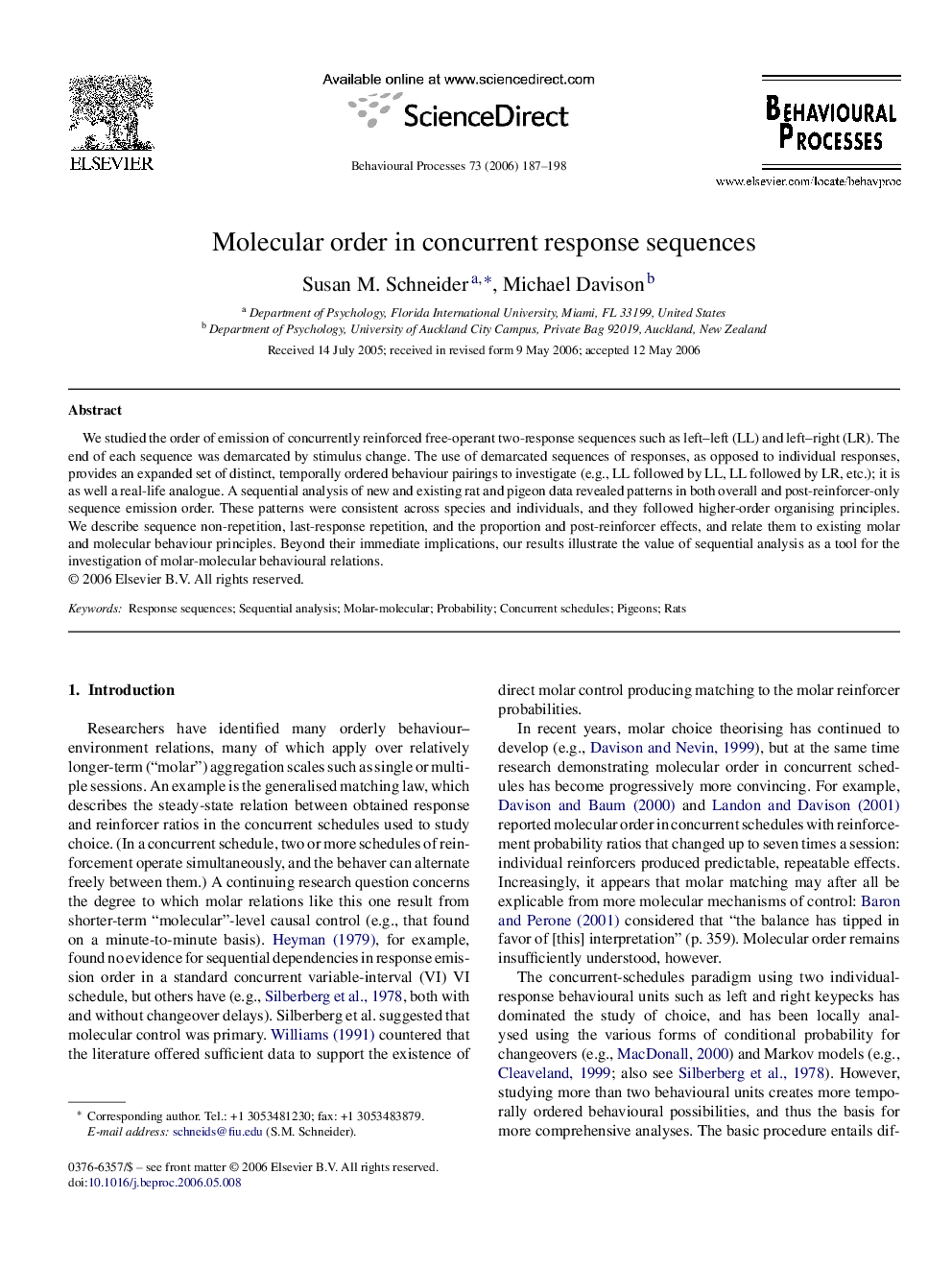| Article ID | Journal | Published Year | Pages | File Type |
|---|---|---|---|---|
| 2427723 | Behavioural Processes | 2006 | 12 Pages |
We studied the order of emission of concurrently reinforced free-operant two-response sequences such as left–left (LL) and left–right (LR). The end of each sequence was demarcated by stimulus change. The use of demarcated sequences of responses, as opposed to individual responses, provides an expanded set of distinct, temporally ordered behaviour pairings to investigate (e.g., LL followed by LL, LL followed by LR, etc.); it is as well a real-life analogue. A sequential analysis of new and existing rat and pigeon data revealed patterns in both overall and post-reinforcer-only sequence emission order. These patterns were consistent across species and individuals, and they followed higher-order organising principles. We describe sequence non-repetition, last-response repetition, and the proportion and post-reinforcer effects, and relate them to existing molar and molecular behaviour principles. Beyond their immediate implications, our results illustrate the value of sequential analysis as a tool for the investigation of molar-molecular behavioural relations.
